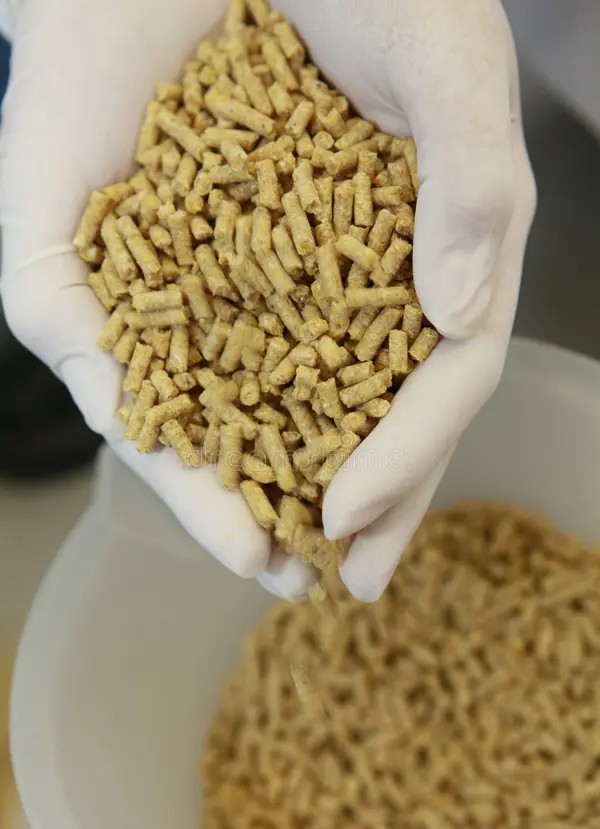Lignosulfonates are natural compounds derived from lignin, a component of wood, extracted during the sulfite pulping process in paper production. They’re widely used as pellet binders in industries like animal feed, biomass fuel, fertilizers, and even industrial applications like coal briquettes or iron ore pellets. Think of them as a glue that holds particles together to form strong, durable pellets. They’re affordable, eco-friendly, and versatile, making them a go-to choice for many manufacturers.
What Are Lignosulfonates?
Lignosulfonates (sometimes called lignosulphonates) come in forms like sodium lignosulfonate, calcium lignosulfonate, or magnesium lignosulfonate, depending on the chemical used in processing. They’re a byproduct of breaking down wood to make paper, so they’re renewable and widely available. These compounds have a sticky, adhesive quality that makes them great for binding particles into pellets—whether it’s grain for animal feed, sawdust for fuel, or minerals for industrial use. They also dissolve well in water (especially sodium lignosulfonate), which helps when mixing them with other materials, and they’re safe for many applications, including animal feed.
Why Use Lignosulfonates as Pellet Binders?
Pellets need to hold together during handling, transport, and use, whether they’re being fed to livestock, burned for energy, or spread as fertilizer. Lignosulfonates shine here because they:
- Stick things together well: Their chemical structure (with sulfonate and hydroxyl groups, if you’re curious) grabs onto particles and holds them tightly when compressed.
- Make pellets tougher: Pellets with lignosulfonates are less likely to crumble or turn into dust, which saves money and reduces waste.
- Are easy on equipment: They act like a lubricant during the pelleting process, reducing wear on machines and saving energy.
- Are eco-friendly: Since they’re natural and biodegradable, they’re a greener choice compared to synthetic binders like plastics or resins.
- Add extra benefits: In animal feed, they can improve digestion or add minor nutrients like calcium or magnesium.
Where Are Lignosulfonate Pellet Binders Used?
Lignosulfonates are used in a bunch of industries. Here’s a detailed look at the main ones:
1. Animal Feed Pellets
If you’ve ever seen those little pellets for chickens, cows, or fish, lignosulfonates are often what keeps them from falling apart. They’re mixed into the feed (usually at 0.5-3% by weight) to bind grains, proteins, and other ingredients. This makes the pellets:
- More durable: They stay intact during transport and storage, reducing dust and waste by about 20-30% in poultry feed, for example.
- Easier to eat: Animals like consistent pellets, and lignosulfonates help prevent ingredients from separating, so every bite has the right nutrients.
- A bit nutritious: They add soluble carbohydrates and sometimes minerals like calcium (from calcium lignosulfonate). They might even act like a prebiotic, helping animals digest better and gain 5-15% more weight in some cases.
- Safe: Studies show lignosulfonates are safe for animals like chickens, pigs, and cattle, even at levels up to 10,000 mg/kg of feed.
For example, a farmer using lignosulfonates in poultry feed might notice less feed waste and happier, healthier birds because the pellets hold up better in feeders.
2. Biomass and Wood Pellets
If you use wood pellets for heating or energy, lignosulfonates might be in them. These pellets, made from sawdust or other plant materials, need to be strong to handle shipping and burning. Lignosulfonates:
- Boost durability: Adding just 1-2% lignosulfonate can make biomass pellets 20% stronger, meeting standards like ENplus for fuel quality.
- Cut dust: Less dust means cleaner handling and better burning efficiency.
- Lower ash: They help reduce ash content, so your stove or boiler stays cleaner.
For instance, a biomass plant might mix sodium lignosulfonate into sawdust before pressing it into pellets, making them tough enough to survive long trips without breaking.
3. Fertilizer Granules
Fertilizers like NPK (nitrogen, phosphorus, potassium) are often pelleted or granulated for easier spreading. Lignosulfonates help by:
- Binding particles: They keep granules intact, reducing dust by about 15% during handling.
- Improving spreadability: Uniform granules spread more evenly, so plants get consistent nutrients.
- Adding sustainability: Since lignosulfonates are natural, they’re a good fit for eco-conscious fertilizer brands.
A farmer spreading lignosulfonate-bound fertilizer might notice less dust clogging their equipment and more even crop growth.
4. Industrial Uses
Lignosulfonates pop up in some heavy-duty applications too:
- Coal Briquettes: They bind coal fines into solid briquettes for easier transport and cleaner burning.
- Iron Ore Pellets: In mining, sodium lignosulfonate can replace pricier binders like bentonite. Pellets made with lignosulfonate might have a strength of about 198 kg per pellet (compared to 250 kg for bentonite), but they’re cheaper and greener.
- Ceramics and Refractories: They help shape and strengthen materials used in high-heat environments, like kilns.
5. Seed Pelleting
For farmers or gardeners, lignosulfonates are used to coat seeds with nutrients or protective layers, forming small pellets. This makes seeds:
- Easier to plant: Uniform pellets work better in mechanical planters.
- Better at growing: The coating can include fertilizers or pest repellents, boosting germination rates.
Imagine a farmer planting pelleted carrot seeds—lignosulfonates help ensure each pellet stays intact and delivers the seed plus nutrients right where it’s needed.
Benefits of Lignosulfonates as Pellet Binders
- Strong Binding: They form a sticky matrix that holds particles together under pressure, making pellets that can withstand rough handling.
- Moisture-Friendly: They soak up water, which helps particles stick during pelleting but can be a downside in very humid conditions where pellets might soften.
- Equipment-Saver: Their lubricating effect reduces friction in pellet mills, cutting energy costs and extending machine life.
- Cost-Effective: They’re cheaper than many alternatives like starch or molasses, saving 10-15% on production costs.
- Green Choice: Being biodegradable and renewable, they’re better for the environment than synthetic binders.
- Versatile: They work in low amounts (0.5-5% usually) across different materials, from feed to fuels to minerals.
Practical Tips for Using Lignosulfonates
If you’re thinking about using lignosulfonates for pelleting, here are some things to keep in mind:
- How Much to Use: Start with 0.5-3% for animal feed or biomass pellets. For fertilizers or industrial uses, you might go up to 5%. Too much (like over 30% in biomass) can increase ash and lower quality, so don’t overdo it.
- Mixing: You can add lignosulfonates as a dry powder or dissolve them in water for even mixing. Sodium lignosulfonate dissolves best, while calcium is less soluble but binds strongly.
- Storage: Keep pellets in dry conditions, as lignosulfonates can absorb moisture and soften in humid environments.
- Testing: Different materials (like wood vs. grain) behave differently, so test small batches to find the right lignosulfonate type and amount.
- Suppliers: Companies like Green Agrochem offer lignosulfonates tailored for specific uses. Check their specs for your needs.
Downsides to Watch For
No binder’s perfect, and lignosulfonates have a few quirks:
- Moisture Sensitivity: Their water-absorbing nature can make pellets less stable in wet climates unless you add a protective coating.
- Variable Performance: Different lignosulfonates (sodium vs. calcium) work better for specific jobs. For example, sodium is great for feed, but calcium might be better for biomass.
- Environmental Questions: While generally safe, some studies aren’t conclusive on their environmental impact in large-scale use, so check regulations if you’re using them for fertilizers or industrial pellets.
Real-World Example
Picture a feed mill making pellets for dairy cows. They mix 1% sodium lignosulfonate into a blend of corn, soy, and vitamins. The pellets come out strong, with less dust in the bags, and the cows eat them happily without picking out just the tasty bits. The mill saves money on maintenance because the lignosulfonate lubricates the pellet press, and farmers notice their cows are gaining weight faster thanks to better feed quality.
Wrapping Up
Lignosulfonates are like the unsung heroes of pellet-making. They’re natural, affordable, and effective, helping create sturdy pellets for animal feed, biomass fuel, fertilizers, and more. They save money, reduce waste, and are kinder to the planet than synthetic options. Just be mindful of how much you use and the conditions you store pellets in. If you’re looking to try them, reach out to suppliers like GREEN AGROCHEM for the right type for your project, and start with small tests to get the mix just right.

